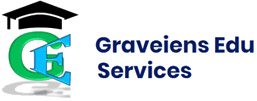In our society, the most underrated champions are the teachers. Teachers play a very important role in our lives. They help future generations to find a purpose in life and also make them ready to face the challenges in the outside world. However, every student in this world is unique. Some students have the capability of quick learning and memorizing power, while some students are slow in their studies and need more support for better results. So, we cannot set one solution for each and every student. Thus, inclusive learning and teaching in higher education and other educational areas come on stage.
For incorporating inclusive learning and teaching in higher education, teachers need different methods, ways and strategies to increase the student’s engagement in studies. Teachers need to think of different ways to improve inclusive learning and teaching in higher education. To know more in detail, read the full blog.
Implementing Strategies to Ensure Inclusive Learning and Teaching in Higher Education
The use of various teaching strategies for inclusive learning and teaching in higher education ensures students’ growth and improves their critical thinking and problem-solving skills.
Teaching strategies for inclusive learning and teaching include some management strategies, pedagogies and principles used by teachers in classrooms for the betterment of students.
Different strategies are selected depending on factors such as classroom demographics, teachers’ educational philosophies, etc. As a teacher, you might worry about what the most effective strategies are.
Here, we will discuss 7 strategies for inclusive learning and teaching in higher education.
1. Student-centric Discussion
This student-centric discussion strategy allows the students to better understand any concept and any topic through cooperation and collaboration.
A fully detailed discussion of the topics or ideas helps the students boost their confidence, implementation skills, and productivity. It also helps them with listening skills. Thus, it shows a great outcome in their assessment, improving their comprehension.
Teachers should keep the students at the heart of these discussions. Moreover, they should act easily as feedback providers. The teachers should guide the students in what they are to accomplish in the day’s discussion.
In such discussions, each group is provided with a facilitator. The discussion groups are to be broken out into multiple groups. The teachers stays in a space where the students can hear and see all the discussions.

After these sessions end, the teachers should meet with the facilitators of each group and conduct a meeting to share the feedback on the leadership they provided to their team that day.
2. Collaborative Learning
This teaching strategy mainly focuses on encouraging partnership and teamwork. Students with various skills are grouped together to solve problems and complete tasks on time.
Here what happens is, that when multiple students are grouped together, different minds show their different perspectives and put up their points of view. Thus, it makes the students understand better about the concept with more effectiveness.
3. Flipped Classroom
The flipped classroom is an excellent, unique teaching technique that works more or less like traditional classroom learning. In traditional classrooms, students learn about new topics and concepts and are asked to practice those topics and concepts as homework.
In the flipped classroom teaching technique, students learn new topics at their home. Also, they practice them in school in different forms, such as lab experiments, presentations, or debates. This boosts the self-confidence and analytical skills of the students. Moreover, it increases student engagement.
Sometimes, giving a chance to the way of teaching can keep your students excited and interested in your classes. Thus, these teaching techniques can bring great results for inclusive learning and teaching in higher education.
4. VAK Teaching
VAK teaching strategy is a comprehensive teaching strategy that stands for a combination of four teaching methods- visual, auditory, and kinesthetic. This strategy improves the learning experience using three main sensory receivers.
Students use their senses to learn and understand new concepts, and the VAK teaching strategy helps students recognize their preferred and dominant learning styles.
For example, reading books and jotting down notes are examples of visual learning, while teaching new things in the classroom is an example of auditory learning. On the other hand, practical tasks are examples of kinesthetic learning.
5. Spaced Learning
Spaced learning is undoubtedly a wonderful teaching technique. It involves breaking a long course into short sessions. Thus, it helps the students understand the concept with breaks and retain the information well.
For example – An English-speaking course conducted for 100 minutes might be stressful. However, if the course is broken into ten days and each day for ten minutes, this can be more beneficial for the students.
6. Differentiate Instruction
Some of your students may be lagging behind, and you may want to improve their performance. Here, you can choose differentiated instruction teaching strategies. Different training pieces are adapted to match the student’s needs. It can be the need for any product, material, method or learning environment. However, you should ensure that their needs are fulfilled.
An example of this is providing audiobooks to some students who are lagging with textbook learning.
7. Dual Coding
Dual coding involves combining words and visuals, such as diagrams, pictures, and graphic organizers, with subject material to improve the student’s memory and learning.
This is the best teaching strategy. It requires very little effort from the students to understand things. For example, if a visual picture of butterflies’ life cycle is shown to the students, they will understand it better than the verbal teaching. Thus, this strategy of teaching helps the students to be more creative.

Final Thoughts
If teachers educate the students using different teaching methods, a positive change can be seen in society. So, teachers should not delay anymore in embracing these strategies and ensure inclusive teaching and learning in higher education.
Nonetheless, we must say once again that if all the teaching practices mentioned in the blog are practiced, the students can learn new concepts and empower themselves with essential life skills.
FAQs
How can we teach effectively In higher education?
By collaborative learning, gamification, experiential learning, adaptive learning and flipped learning, you can create a good, engaging and effective learning experience for your students. Also, teachers should ensure inclusive learning and teaching in higher education to improve the impact of learning on students.
Why is it important to use different teaching strategies?
Different teaching strategies play an important role in classroom instruction. These learning strategies help students connect, be excited, and participate in the learning process, so they must be used.



Comments 0